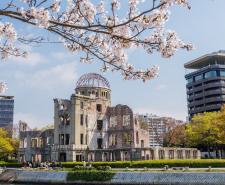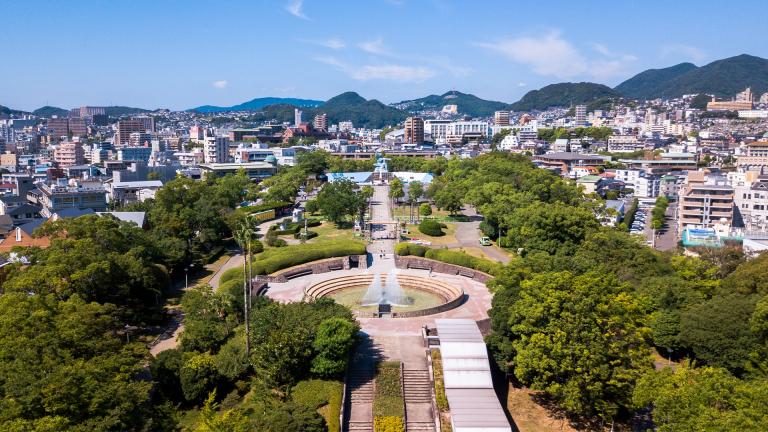
Read more about WW2

On the morning of 9th August 1945, US B-29 bomber Bockscar (with Major Charles Sweeney in the cockpit) took off carrying the second atomic bomb intended for wartime use. The target was Kokura. But smoke and cloud cover obscured the city. After circling three times, the crew changed course. Nagasaki became the new target.
At 11:02am, they dropped the atomic bomb. Just three days after Hiroshima, another city was gone.
At Sky HISTORY, we’re always drawn to the moments that don’t just change a war, they transform the way the world understands what war is. The bombing of Nagasaki did just this.
Nagasaki was a port town, a manufacturing centre and a Catholic stronghold in largely Buddhist Japan. At the time of the bombing, it held military targets, including a shipyard and munitions factories. But like Hiroshima, it was also home to tens of thousands of civilians. Everyday people going to work, walking to market, sending children off to school.
The bomb (codenamed Fat Man) exploded over the Urakami Valley at 11:02am. It was supposed to hit the city centre, but bad weather and mountainous terrain steered the plane off course. In a grim way, that may have spared parts of Nagasaki from even worse destruction.
But what it did hit was devastating. Around 40,000 people died instantly. Another 30,000 people died in the months and years from radiation sickness, burns and other injuries.
Hiroshima had already shocked the world just days before. Nagasaki confirmed something else: Hiroshima wasn’t a one-off. The age of nuclear weapons had arrived.
The second bomb fell at a moment when Japan was already faltering. On 8th August, just one day before, the Soviet Union declared war, opening a new front. Germany had surrendered to Allied forces earlier that spring, in May 1945.
By 15th August, following two devastating atomic bombings, a new enemy in the Soviets, and the collapse of its strongest Axis ally, Japan finally announced its surrender.
The war was over. But for Nagasaki, the hard part was just beginning.
The city was shattered. Hospitals gone, homes levelled, clean water hard to come by. Even food and medicine were in short supply. Survivors (hibakusha, as they came to be known) faced not only physical scars, but suspicion. Some neighbours worried that radiation might be contagious. Others simply didn’t know what to say.
And yet, life returned. Slowly and a little unevenly. But it came back. Schools reopened. Roads were patched up. Urakami Cathedral, once the biggest Catholic church in East Asia, was rebuilt near the site where it had fallen. Today, the redbrick cathedral stands for everything the city lost. And everything it refused to let go of: peace, hope and dignity.
In 2025, Nagasaki will pause. Ceremonies will take place in Peace Park and bells will ring at 11:02am, the moment the sky turned white. The anniversary is also a chance to reflect on the years that followed. The nuclear arms race between the United States and the Soviet Union, and the Cold War that dragged on until 1991.
Unlike Hiroshima, Nagasaki isn’t always front of mind in popular culture or commemoration. It wasn’t the first atomic bomb victim and as such, it’s mentioned less in textbooks, films and literature. But its story matters just as much.
It was the moment the world knew Hiroshima wasn’t an exception. And the moment we saw that nuclear war, once imagined, was now reality. Perhaps most sobering of all, it was the last time an atomic bomb was used in conflict. But not, necessarily, the last time one could be. This reality is especially relevant given the current political climate.
Want more thoughtful features on history’s hardest questions? Sign up for the Sky HISTORY newsletter and get articles, shows, videos and more, straight to your inbox.